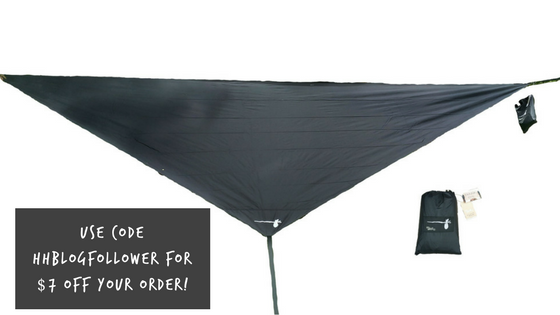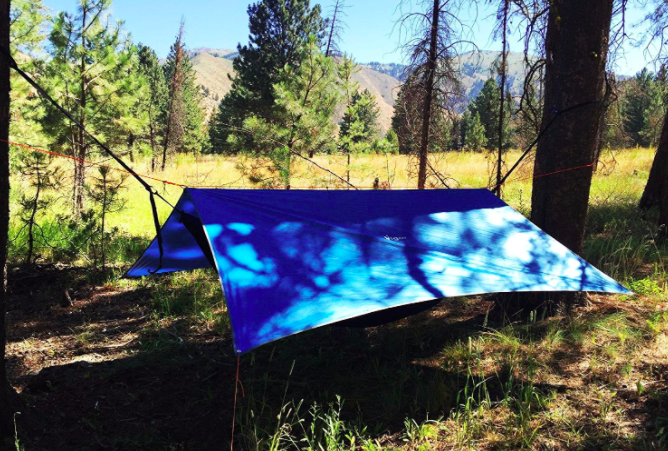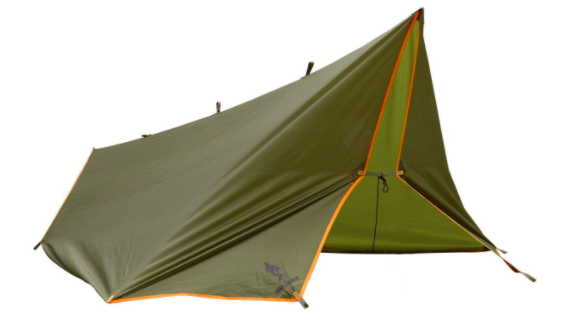How to: Stay dry while hammocking
How to stay dry while hammocking
Hammock Tarps
There are lots of different hammock tarps out there in all different styles, sizes, and materials. Depending on the weather conditions, personal preference, ease of set-up, and weight, there should be a tarp out there that will suit your needs. We will review the most common types of tarps to help you determine which might be best for you.
What size?
This again is up to personal preference, however it is recommended that you purchase a tarp that extends 6-12 inches beyond your hammock length. Remember a hammock will sag when hung so a 10 ft. hammock for example, will only have a length of around 8ft when hung.
Diamond
Each style tarp will have their own pros and cons which we will review below. This tarp style is on the minimal coverage side of the scale. However, when used correctly it provides more than enough coverage from wind and rain while hammocking.
Pros: This style is one of the easiest to set up. There are only two anchor points. When you buy Hobo Hammock’s version the stakes are attached as well as the ropes so set up is even more simple. Check out our rain fly here.
Cons: There is less coverage here, so for more inclement weather it will require a more thoughtful set-up.
Catenary
This tarp style is similar to a rectangular and hexagonal tarp style. However, in order to reduce some weight they have curved cuts along the sides. It provides great coverage and has 4 anchor points.
Pros: This will be a lighter weight option than the rectangular or hexagonal styles, while still providing great coverage. Serac’s overhang rain fly also pulls tight with the ropes provided so you do not need a ridgeline to hang their tarp. A 4 anchor system allows for a little more versatility with your set up as well.
Cons: Because of the 4 anchor points, set up will be a little more lengthy.
Hexagonal
Here is a hexagonal tarp. This style has a curved cut along two sides of the tarp to reduce the amount of fabric. It provides good coverage and has 4 anchor points.
Pros: With the curved cuts they will be a little lighter. There are also more set up options with the 4 anchor point systems.
Cons: There is still a significant amount of fabric with this tarp style. If you are looking for a lightweight option this might not be the best choice.
Rectangular
Here is a great example of a rectangular tarp style. This tarp style has more coverage than a diamond shape, and has 4 anchor points.
Pros: You can find lots of tarps in this style which means they will generally be a little cheaper. The additional fabric also provides more coverage from inclement weather.
Cons: The additional fabric does not vent as well so you may get condensation inside your tarp. With the additional fabric you will also add weight.
Full Coverage/Winter
Here is an example of a full coverage tarp also called 4-season or winter tarp. This is a great option for winter weather or during very serious storms. It has the most coverage, and generally around 6 anchor points.
Pros: For winter camping this really is the best option. It easily provides enough coverage so you can keep what warmth you have.
Cons: With the additional fabric and weight it can be a hassle to carry around in the warmer months.






